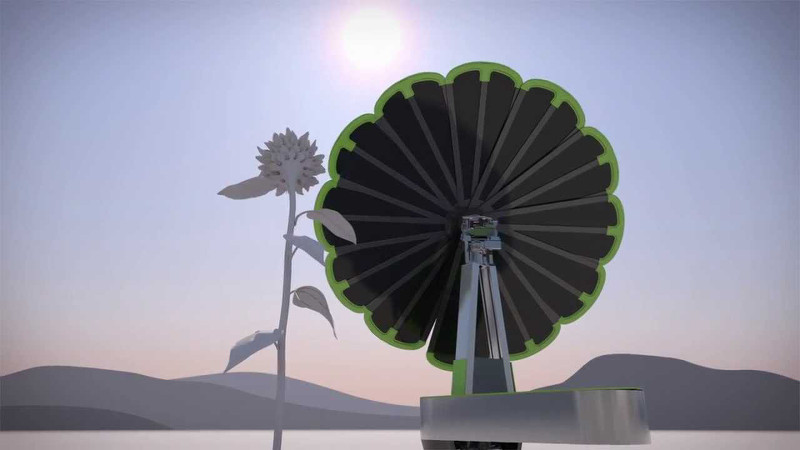Austria’s SmartFlower is unfurling its objectively stunning 4kWh-equivalent dual axis tracker in its U.S. launch here, a few months ahead of the first U.S. installation scheduled for November, says Alexander Swatek, the managing partner of the Vienna-based company. The petal-shaped monocrystalline panels are encased in 2.0 mm glass so strong and thin that it can be flexed with the hand.
The 12-petal, 194 square-foot structure produces 2.5 kWh, the output equivalent to a 4.0 kWh fixed rooftop array, notes James Gordon, the CEO of recently-established SmartFlower North America, based in Boston. While the product is being targeted for residential installations, it also will be sold for commercial installations, he says. The company already has sold over 1,000 of the units, in Europe, Asia, the Middle-East and other areas, Swatek notes.
The system is being sold without storage for about $16,900, and about $22,000 with storage, notes Swatek. The U.S. launch will not include models with storage capability, but they are expected to follow soon. The POP-e version includes an electric vehicle charging station that can provide up to 22 kW.
The cost of the PV is between $3.50 and $4.00 per kWh, Swatek reckons. Since the panels flex during deployment to 78 degrees of inclination, they also are self-cleaning as they fold up to a stack at night. The tracking system yields higher energy production than roof-top solutions during the critical 5:00 PM to 8:00 PM period when utility rates typically are at their highest.
The system includes a warranty of 25 years on the panels, 10 years on the inverter and two years on the remainder of the product, with an optional three-year extension, says Swatek. The system is designed to last 25 years.
The 100 percent Austrian-made SmartFlower installs in two or three hours, depending on foundation type, either metal screw or concrete pillar design, notes Linnea Nilsson, the international marketing manager for the company. Once U.S. sales volumes increase to a point of critical mass, some of the components likely will be sourced in the United States, says Gordon. The company is developing a dealer network now.
This content is protected by copyright and may not be reused. If you want to cooperate with us and would like to reuse some of our content, please contact: editors@pv-magazine.com.









By submitting this form you agree to pv magazine using your data for the purposes of publishing your comment.
Your personal data will only be disclosed or otherwise transmitted to third parties for the purposes of spam filtering or if this is necessary for technical maintenance of the website. Any other transfer to third parties will not take place unless this is justified on the basis of applicable data protection regulations or if pv magazine is legally obliged to do so.
You may revoke this consent at any time with effect for the future, in which case your personal data will be deleted immediately. Otherwise, your data will be deleted if pv magazine has processed your request or the purpose of data storage is fulfilled.
Further information on data privacy can be found in our Data Protection Policy.